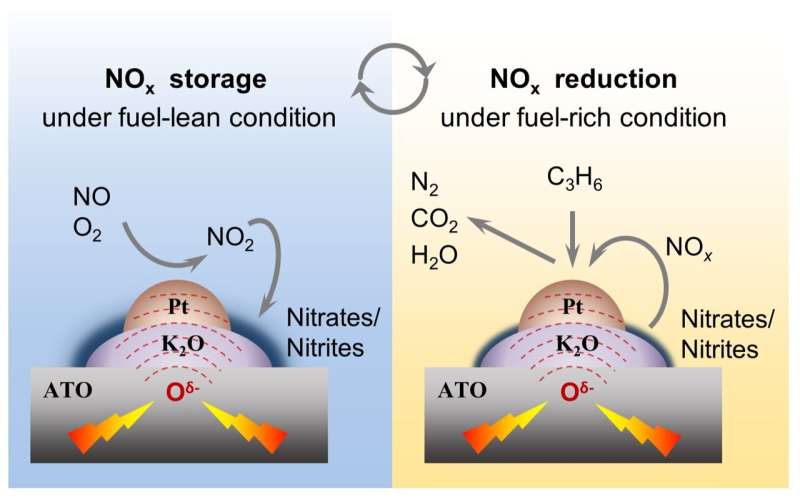This article has been reviewed according to Science X's editorial process and policies. Editors have highlighted the following attributes while ensuring the content's credibility:
fact-checked
peer-reviewed publication
trusted source
proofread
Novel electrification strategy enhances low-temperature NOx removal

Prof. Zhang Jian's group from the Ningbo Institute of Materials Technology and Engineering of the Chinese Academy of Sciences, cooperating with Prof. Zhang Zhaoliang's group from University of Jinan, has developed a novel electrification strategy to improve NOx pollutant removal performance at low temperatures.
The study was published in Environmental Science & Technology.
NOx storage reduction (NSR) is a promising approach to control NOx emissions from diesel vehicles, thus to address the growing global energy crisis and climate change.
However, due to the improvement of engine technologies and frequent idling in traffic, the exhaust temperatures are usually below 250 ℃, which is too low for catalytic NOx conversion to occur.
To address this issue, the researchers developed a novel electrified NSR strategy. Pt and K co-supported antimony-doped tin oxides (Pt-K/ATO) serve as conductive catalysts. Using C3H6 as a reductant, a low input power (0.5-4 W) was applied to the catalyst to trigger NSR reactions.
With this strategy, the ignition temperature for 10% NOx conversion was reduced to 165 °C, which is nearly 100 °C lower than that of the traditional thermal counterpart.
To optimize the power configuration, the fuel-lean power was reduced, resulting in a 23% increase in the maximum energy efficiency.
In addition, the electrically driven release of lattice oxygen from the catalysts is shown to play crucial roles in the NSR reactions, including promoting NO oxidation for NOx adsorption, O2 evolution for NOx desorption, as well as C3H6 activation for NOx reduction, thus greatly improving the NSR performance.
As reported in the previous work of the research group, this effect has also been applied to catalytic soot combustion, demonstrating its certain universality.
This electrification strategy may shed light on the design of hybrid vehicles, especially on developing electronic control units, since the electric power input can be adjusted in real-time to reduce exhaust pollutants.
More information: Xueyi Mei et al, Electrification-Enhanced Low-Temperature NOx Storage–Reduction on Pt and K Co-Supported Antimony-Doped Tin Oxides, Environmental Science & Technology (2023). DOI: 10.1021/acs.est.3c05354
Journal information: Environmental Science & Technology
Provided by Chinese Academy of Sciences





















